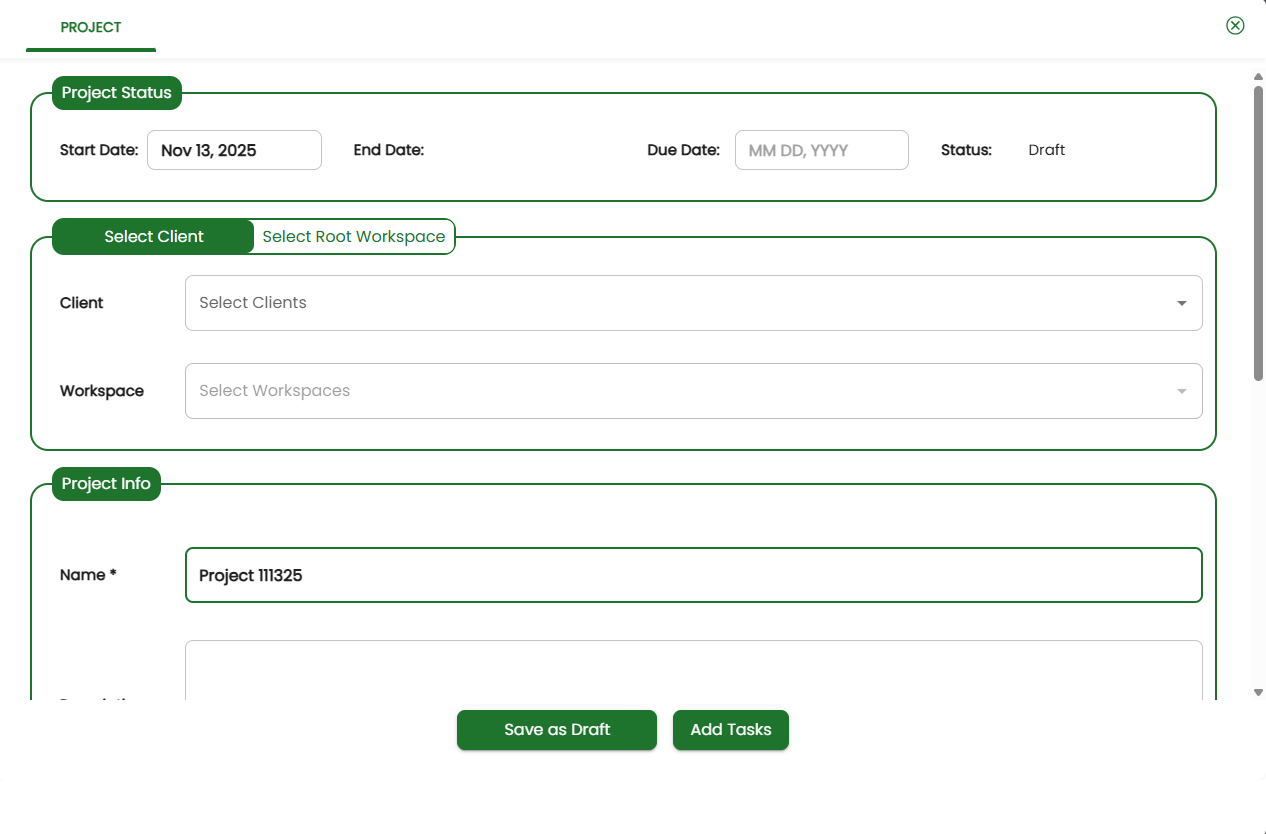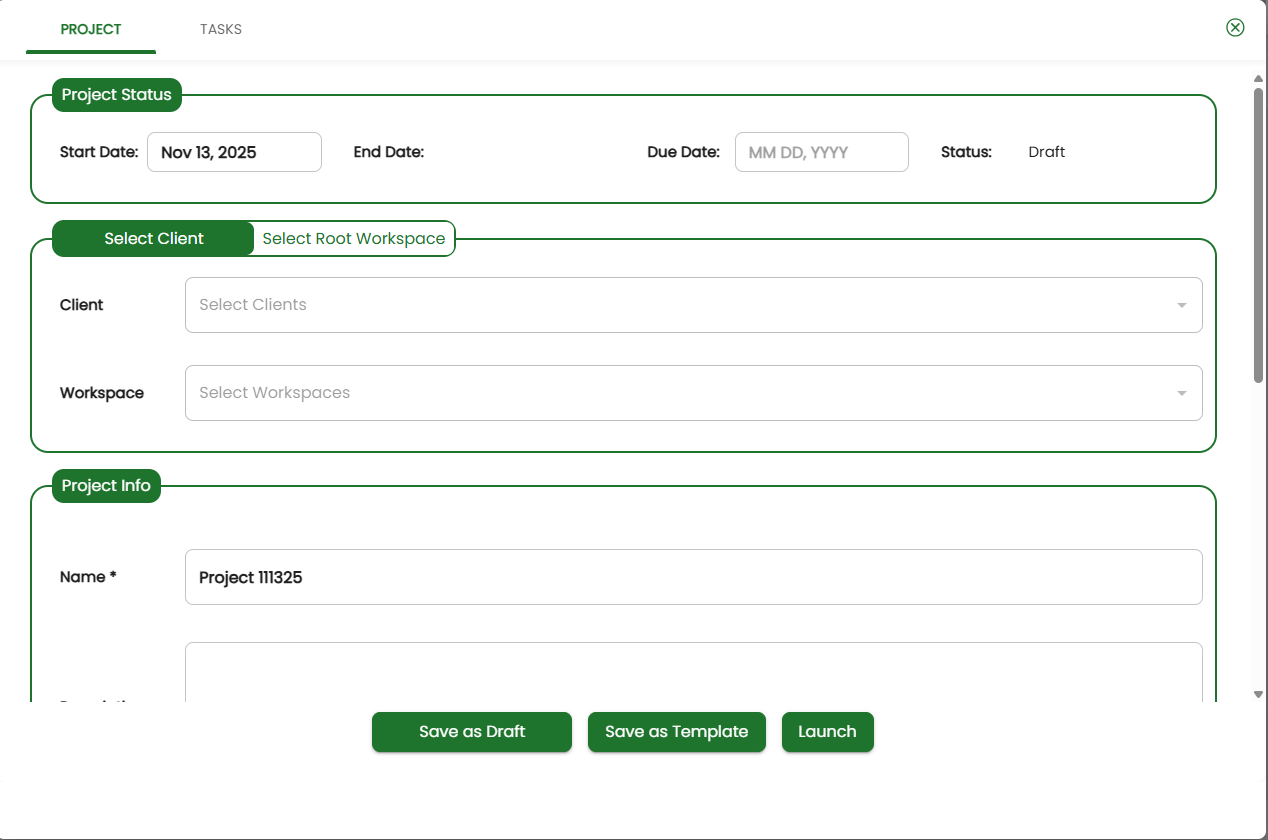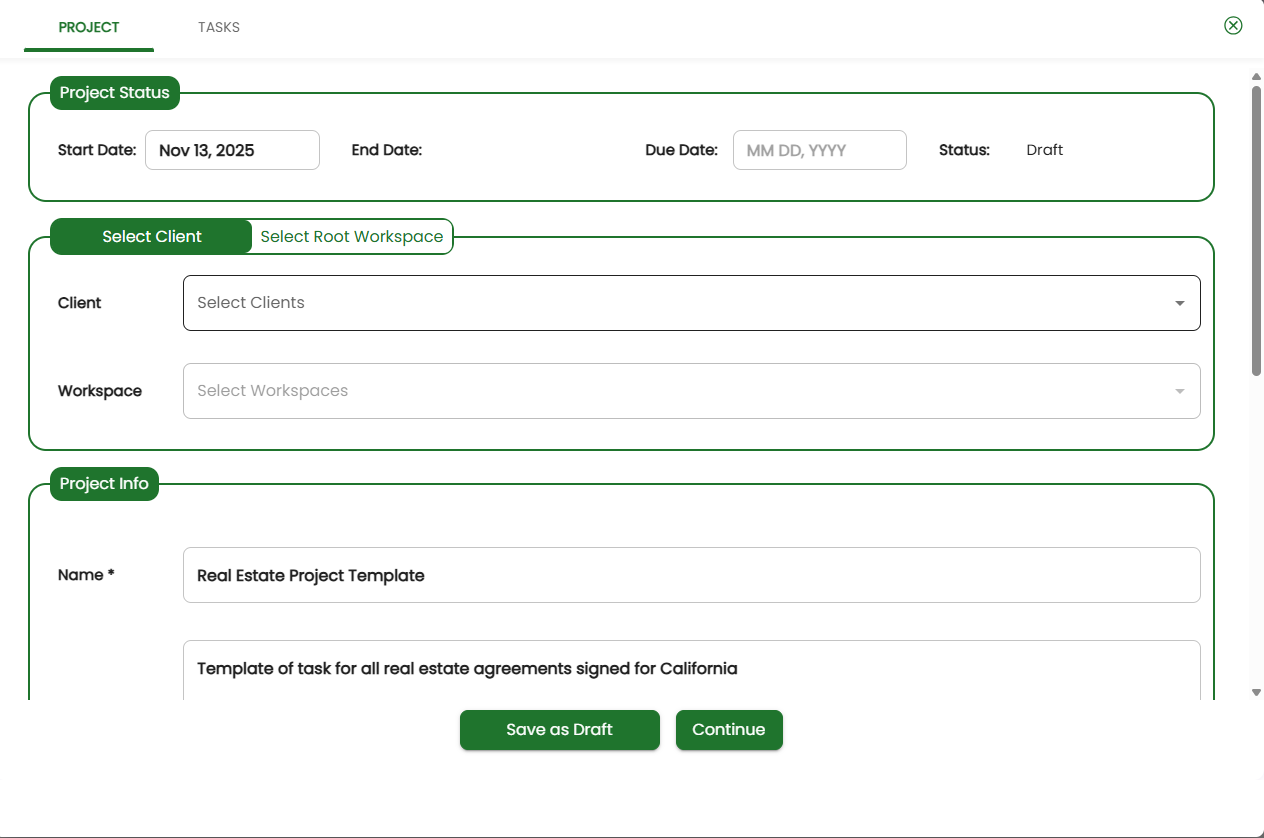
If you frequently create the same projects and tasks, you can save time and effort by setting up a project template, allowing you to quickly deploy these task sets whenever needed.
Step 1: Click on the ‘Tasks’ tab at the top of Basil.
Step 2: Next, toggle the view to ‘Projects’ and click ‘+ Project’.
Step 3: Before we can create the Project Template, we need to go through some setup. On this first screen, the only required field is the Name field under the Project Info section. Everything else is optional. After entering the name and any other fields you want to fill out, you can either click the “Save as Draft” button at the bottom to come back to it later, or you can click the “Add Tasks” button at the bottom and proceed to the next page.

Step 4: This screen is where you can add your first task to the project. Since we’re making a template, the title of the task is required, but not the description. Upon entering a title and hitting the Enter or Tab key on the keyboard, more fields will display: Assign To, Priority, Tags, the Schedule section, the Billing section, and the Folders and Files section. Assign To is a required section, but you can leave it assigned to “Unassigned” if you want.
Once you’ve filled out all the fields you wanted to fill out, you can click one of two buttons at the bottom of the screen: “Save and Add More” or “Save and Close”. The former will allow you to add another task to the project, and the latter will take you to the Project Details Page.
Step 5: The Project Details Page has two tabs which can be seen in the upper left: the Project tab and the Tasks tab. The Project tab shows you the information you entered at the start of the project’s creation, and the Task tab will show you all of the tasks you’ve added to this project.

The Tasks tab will allow you to add more tasks to the project via the Add Task button at the bottom. You can also edit or delete existing tasks via the icons in the Actions column.
At the bottom of the Project tab, you have three options: Save as Draft, Save as Template, and Launch. To finalize template creation, click the Save as Template button.
To use a previously created Project template, follow the steps below.
Step 1: Click on the ‘Tasks’ tab at the top of Basil.
Step 2: Next, toggle the view to ‘Projects’, click the 3-dot menu option next to ‘+ Project’, then click the ‘Templates’ option
Step 3: On the screen, select ‘Use’ for the template you wish to utilize.
Step 4: This screen has five sections:
- Project Status: Includes start and due dates.
- Select Client: Allows you to choose the client(s) or your firm, and a workspace for each. You can also apply the project template to any Root Workspaces you may have created.
- Project Info: Where you will enter a name for this project (which must be different from the template’s name) and an optional project description.
- Schedule: Enables you to select a repetition cycle if needed and choose whether or not to enable a workflow order.
- Cora Assistant: You can choose whether to use the Cora Assistant and, if so, what mode to use. You can read more about the Cora Assistant by clicking here.

At the bottom are two buttons: “Save as Draft”, and “Save Project”. “Save as Draft” will save the templated project and allow you to come back to it later for further editing. Clicking “Save Project” will finalize the application of the template and create a new project. It will also change the buttons at the bottom (adding a “Save as Template” button and a “Launch” button) and add a “Tasks” tab at the top.
Step 5: Once all tasks have been listed, assigned, and had details saved, you can click ‘Launch’ to launch the Project.
Step 6: You'll be brought back to the Projects section of the Tasks tab. The Project and Tasks you just created will be active and Basil will have notified all participants.
